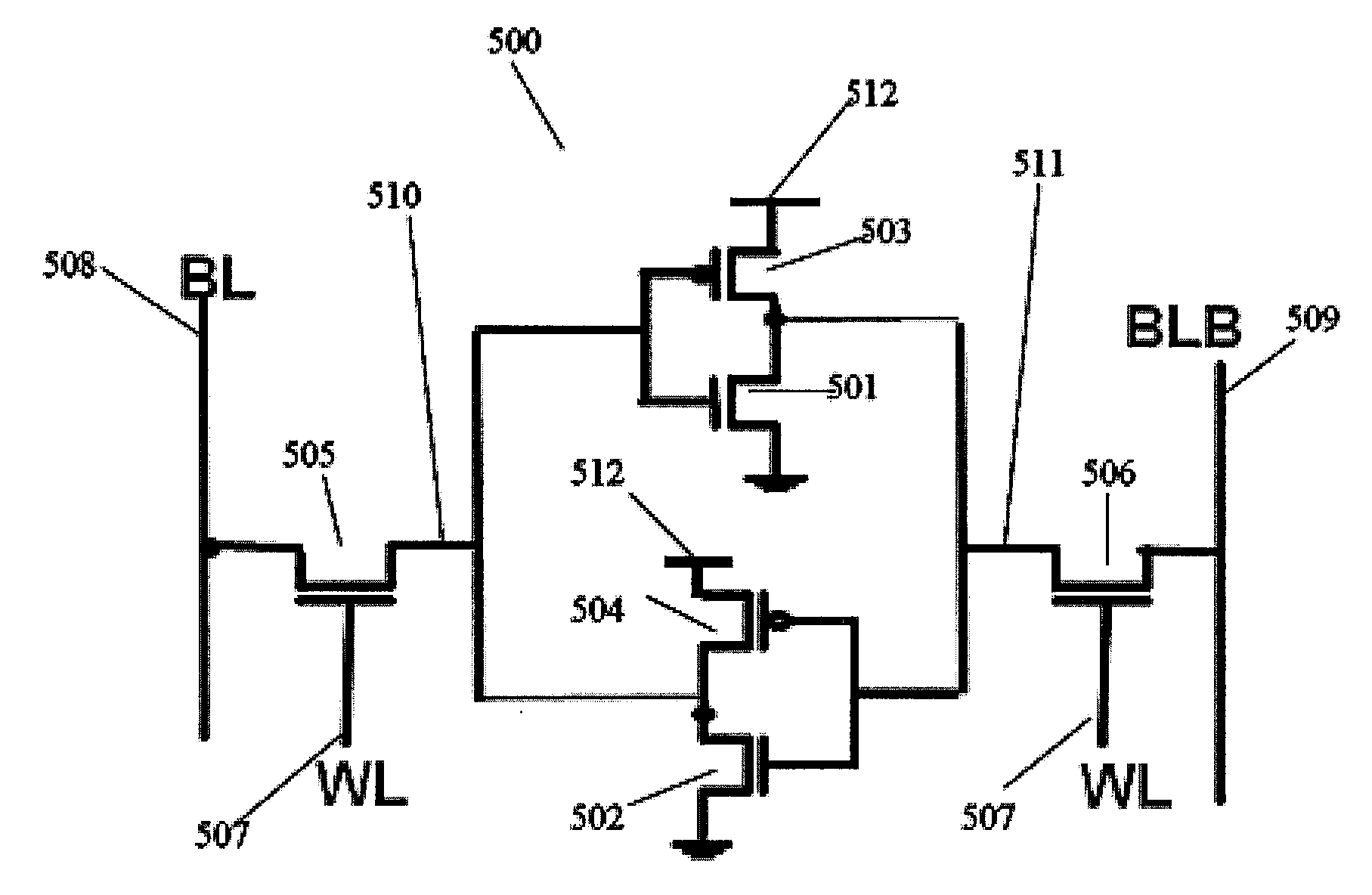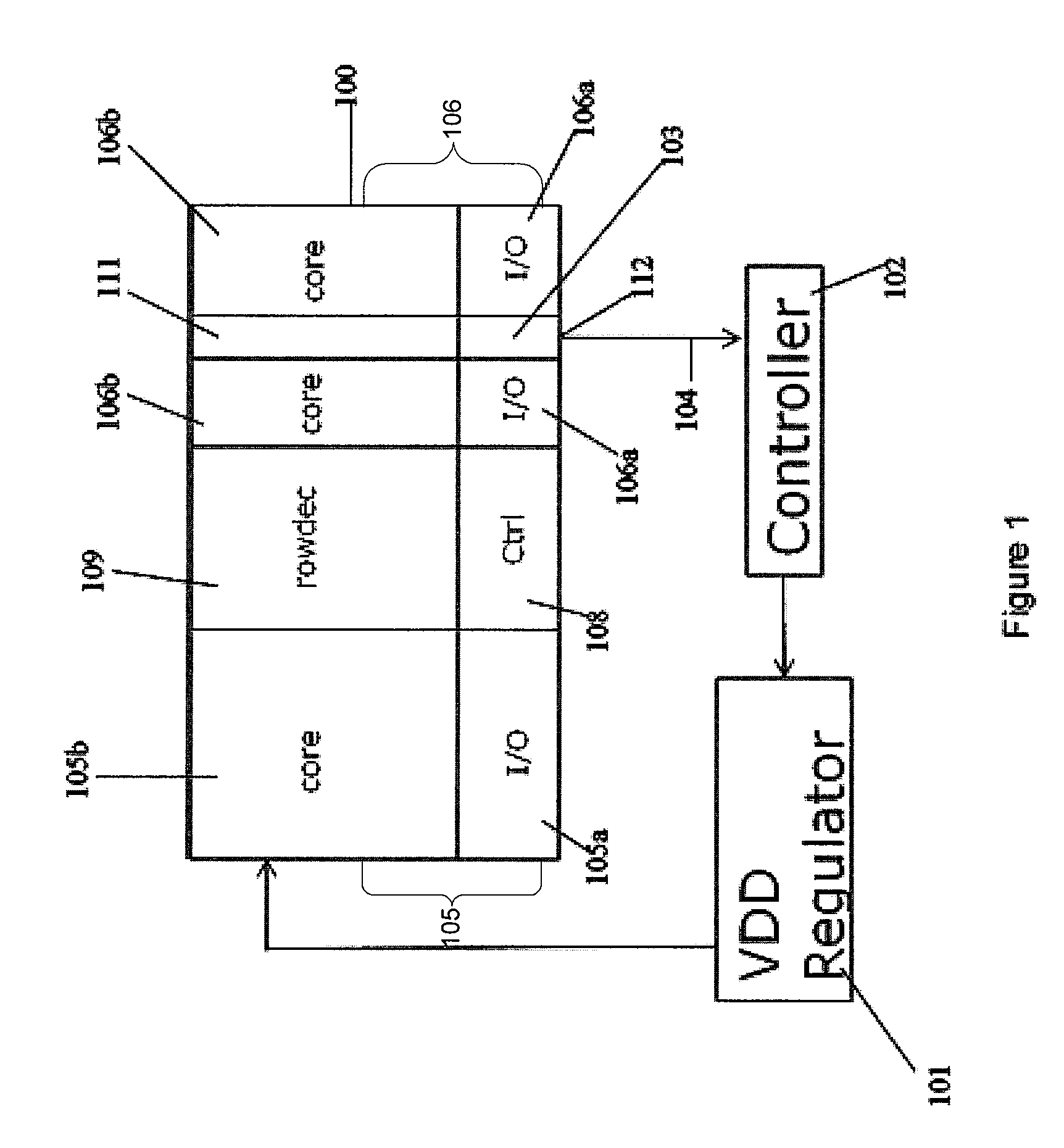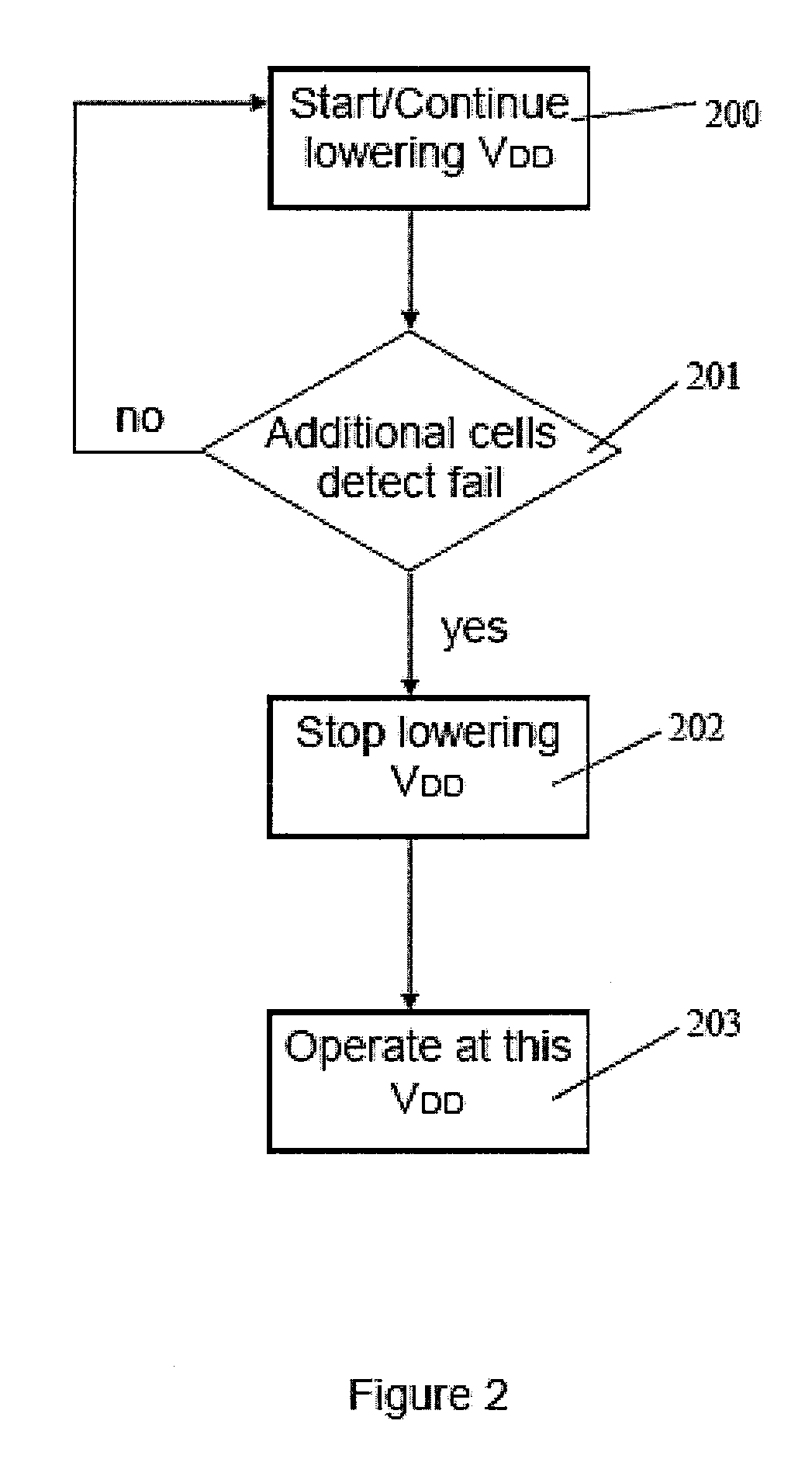Canary based SRAM adaptive voltage scaling (AVS) architecture and canary cells for the same
a technology of adaptive voltage scaling and canary cells, applied in the field of memory banks, can solve the problems of power consumption of the soc, limited vdd scaling during dynamic operation of the memory, and limited power supply reduction
- Summary
- Abstract
- Description
- Claims
- Application Information
AI Technical Summary
Benefits of technology
Problems solved by technology
Method used
Image
Examples
Embodiment Construction
[0032]Some embodiments may relate, but not exclusively to, adaptive voltage scaling techniques implemented on on-chip memory. By way of example only some embodiments may relate to static random access memory SRAM in a system on a chip SoC and canary adaptive voltage scaling applied thereto.
[0033]Embodiments may provide adaptive voltage scaling for memory. The memory may be, for example, SRAM or cache memory. The memory may form, for example, part of an embedded system or SoC. In embodiments, adaptive voltage scaling may be applied in a dynamic operation of memory cells. Some embodiments may provide adaptive voltage scaling for dynamic operation of memory cells, static operation of memory cells or dynamic and static operation of memory cells.
[0034]Embodiments may provide adaptive voltage scaling through use of additional cells. In some embodiments, the additional cells may be sensor cells for sensing; for example, a feedback to an adaptive voltage controller. In some embodiments, the...
PUM
 Login to View More
Login to View More Abstract
Description
Claims
Application Information
 Login to View More
Login to View More - R&D
- Intellectual Property
- Life Sciences
- Materials
- Tech Scout
- Unparalleled Data Quality
- Higher Quality Content
- 60% Fewer Hallucinations
Browse by: Latest US Patents, China's latest patents, Technical Efficacy Thesaurus, Application Domain, Technology Topic, Popular Technical Reports.
© 2025 PatSnap. All rights reserved.Legal|Privacy policy|Modern Slavery Act Transparency Statement|Sitemap|About US| Contact US: help@patsnap.com



